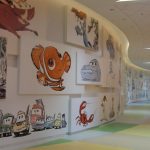Creativity is essential in architectural design, allowing architects to experiment with new ideas and push boundaries. While digital tools provide convenience, hands-on model making encourages a deeper connection with the design process. Working with physical materials helps architects explore different forms, test concepts, and refine details in ways that digital modelling alone cannot achieve. The hands-on approach of model making UAE nurtures creativity by turning abstract ideas into tangible forms.
Encourages experimentation with forms and structures:
Architectural model making allows designers to test various shapes, proportions, and layouts in a physical space. Unlike computer-generated models, physical models offer an intuitive way to understand how different elements interact. This freedom to experiment inspires innovative designs and unique architectural solutions.
Improves spatial awareness:
Building a model helps architects and designers develop a better sense of space and scale. Seeing a design in three dimensions makes it easier to identify proportions and relationships between different elements. This awareness leads to more creative and functional designs that flow naturally.
Promotes problem-solving and adaptability:
During the model-making process, challenges often arise, such as material limitations or structural issues. Overcoming these obstacles requires creative thinking and adaptability. Architects must find alternative solutions, which often leads to new and unexpected design ideas that improve the final concept.
Encourages hands-on creativity:
Working with different materials, textures, and construction methods stimulates creative thinking. The tactile experience of cutting, assembling, and shaping materials engages the senses in a way that digital tools cannot. This interaction inspires fresh perspectives and improves artistic expression.
Improves presentation and communication of ideas:
A well-crafted architectural model makes it easier to present ideas to clients, investors, and colleagues. Unlike digital renderings, physical models provide a clear, interactive representation of a design. This ability to showcase ideas in a tangible form encourages feedback and collaboration, leading to more refined and creative solutions.
Architectural model making is more than just a technical skill—it is a creative process that allows architects to explore, experiment, and innovate. By working with physical materials, designers gain a deeper understanding of space, develop problem-solving skills, and refine their artistic vision. Through model making, creativity flourishes, leading to groundbreaking architectural designs.

